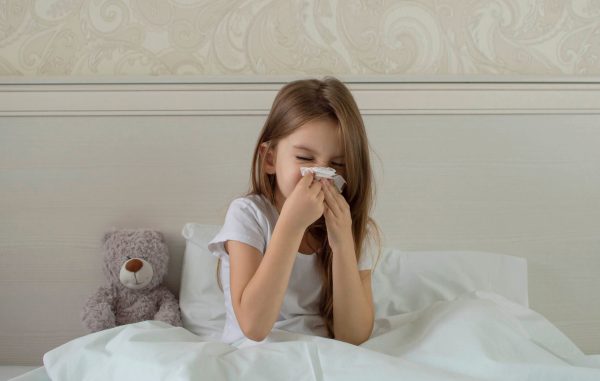
Indoor pollution is a silent threat lurking in many homes, affecting the health and well-being of occupants without them even realizing it. From airborne allergens to volatile organic compounds (VOCs), various contaminants can compromise the air quality in your living space.
Indoor air quality significantly impacts your health and comfort. Poor air quality can lead to a range of health issues, including allergies, respiratory problems, and even more severe conditions in the long term. By taking proactive measures to combat indoor pollution, you can create a healthier home environment for you and your family.
In this comprehensive guide, we’ll explore effective strategies and tools for combatting indoor pollution, ensuring that your home becomes a sanctuary of clean and healthy air.
Identifying Indoor Pollutants
An air purifier for allergies plays a pivotal role in maintaining indoor air quality. They efficiently capture and eliminate pollutants, ensuring the air you breathe is clean and healthy. Investing in a quality air purifier, like the one discussed in this Molekule air purifier review, is essential for safeguarding your well-being and creating a pollutant-free home environment. Air purifiers that employ PECO (Photo Electrochemical Oxidation) technology are more effective than traditional HEPA filters at eliminating particles as small as 0.1 microns. This device can effectively remove allergens, VOCs, and even viruses from your indoor air. However, the first step in improving indoor air quality is to identify the culprits. Common indoor pollutants include:
Dust and Allergens: Dust mites, pet dander, and pollen can trigger allergies and respiratory issues.
Volatile Organic Compounds (VOCs): These chemicals, found in household products like paints and cleaning agents, can release harmful gases.
Mold and Mildew: Damp and poorly ventilated areas can promote the growth of mold, which can lead to various health problems.
Tobacco Smoke: Smoking indoors releases harmful chemicals that linger in the air.
Radon Gas: A colorless, odorless gas that can seep into homes and pose a risk for lung cancer.

Creating a Healthy Indoor Environment
Fighting indoor pollution is important to keep your home environment healthy. With the right strategies and tools, you can breathe easily and enjoy a healthier, more comfortable living space. Start implementing these tips today, and you’ll be well on your way to a cleaner, fresher home:
- Improving Ventilation
Proper ventilation is key to reducing indoor pollution. Here are some tips:
Open Windows and Doors: Allow fresh outdoor air to circulate through your home regularly.
Use Exhaust Fans: Install exhaust fans in bathrooms and kitchens to remove moisture and pollutants.
Air Out Your Home: On mild days, leave your doors and windows open for a few hours to refresh the indoor air.
- Using Air Purifiers
Air purifiers play a pivotal role in reducing indoor pollution. Here’s how to maximize their effectiveness:
Choose the Right Size: Select an air purifier that can adequately filter the air in the room it’s placed in.
Regular Maintenance: Clean or replace filters as recommended by the manufacturer to ensure optimal performance.
Strategic Placement: Position the purifier in the area where you spend the most time, such as the bedroom or living room.
- Eliminating Mold and Mildew
Mold and mildew can be particularly troublesome indoor pollutants. To combat them:
Control Moisture: To prevent mold growth, make sure indoor humidity stays below 50%.
Use Dehumidifiers: Dehumidifiers can keep the correct humidity levels in wet places such as basements.
Regular Cleaning: Routinely clean and disinfect areas prone to mold, such as bathrooms and kitchens.
- Reducing VOC Exposure
Minimizing exposure to VOCs is essential for maintaining indoor air quality:
Choose Low-VOC Products: Opt for paints, cleaning products, and furniture that are labeled as low-VOC.
Proper Ventilation: When using VOC-emitting products, ensure good ventilation to disperse the chemicals.
- Eliminating Tobacco Smoke
If you or someone in your household smokes, take steps to reduce tobacco smoke pollution:
Designated Smoking Area: Create a designated outdoor smoking area to prevent smoke from entering your home.
Air Purifiers: Use air purifiers in rooms where smoking occurs to capture smoke particles and odors.
Stop Smoking: Quitting smoking reduces harmful pollutants in the air and improves your and your family’s overall health.
- Radon Gas Mitigation
Radon gas is a silent threat that can be addressed with these strategies:
Radon Testing: Conduct a radon test in your home to determine if levels are elevated.
Radon Mitigation System: If levels are high, consider installing a radon mitigation system to vent the gas safely outdoors.
In addition to the specific strategies mentioned above, there are some broader steps you can take to create a healthier indoor environment:
Routine Cleaning: Dust and vacuum your home regularly to reduce dust mites and allergens. Use a vacuum cleaner with a HEPA filter to trap tiny particles.
Natural Air Purifiers: Consider adding indoor plants like spider plants, peace lilies, or snake plants to help naturally filter the air.
Avoid Harsh Cleaning Chemicals: Opt for eco-friendly and non-toxic products to minimize chemical pollutants.
Keep Pets Clean: Bathe and groom your pets regularly to reduce shedding and dander.
Limit Moisture: Fix any leaks promptly and use exhaust fans or a dehumidifier to maintain appropriate humidity levels.
Change Air Filters: Regularly replace the filters in your HVAC system to ensure it functions efficiently.
Conclusion
In your quest to combat indoor pollution, remember that your home should be a haven of clean and healthy air. By identifying and addressing specific pollutants, using air purifiers that use PECO (Photo Electrochemical Oxidation) technology, and implementing proper ventilation and maintenance practices, you can significantly improve the quality of the air you breathe indoors. Don’t underestimate the importance of a pollutant-free environment for your overall well-being. Start implementing these strategies today to create a healthier home for yourself and your loved ones.

